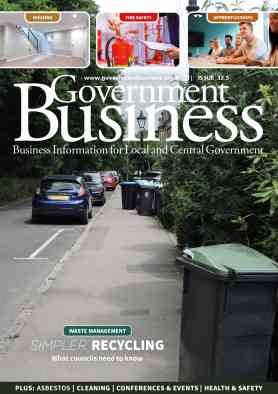Faced with increasing pressure to do more with less, all kinds of organisations are looking at ways to work smarter and local government is no exception.
On the path to success
There are now several homes and developments built to the Code for Sustainable Homes since its initial roll out in early 2007. BRE’s Housing Futures team have worked on many of these projects and have a good insight into the most common pitfalls experienced by designers and architects.
Mandatory requirements
Note from the start the mandatory requirements for the Code level you aim to achieve under each section. Obtaining higher levels of the Code is not just about an overall score; it also contains mandatory constituents that can vary from location to location (e.g. different waste storage requirements of local councils). It can be difficult to improve a design that is already built. This is highlighted where there isn’t enough space for waste storage or you do not have a satisfactory flood risk assessment. Despite having made large investments elsewhere, you may end up being ‘nil rated’. Start early with the design and pay particular attention to the mandatory requirements.
Aim to slightly exceed your total Code level points requirement. Design slippage almost always happens as budgets tighten, measured performance doesn’t quite meet the original design intent or information trails are not as robust as they should have been. The loss of even one credit can result in a lower Code level if redundancy is not integrated into the strategy.
Supporting evidence is important. Don’t underestimate the amount of work required here and pay particular attention to the format this must be supplied in.
Try to specify early to benefit from any additional merit that your improved specification will allow over the default assumptions. Both SAP and the Code use nominal ‘worse case’ for default value entries. These claims will be checked by assessors, so if the specification is subsequently lowered, check the effect of this on the credits or SAP rating, continuously using them as design tools. Cost effectiveness can also be checked in this way.
Where a Code level is difficult to achieve, revisiting Energy can be beneficial as it can be the easiest to control and to ‘retrieve’ credits dropped elsewhere in the assessment.
Energy
Energy contributes over 1/3 of the CSH credits and therefore a good performance here is critical. DER vs. TER: Ensure you are using the most current version of SAP applicable (see Top Tips at end of article to find out how to check this). This permits specific inputs of performance criteria for mechanical ventilation and heat recovery systems (MHVR) which allows the benefits of high efficiency units to be reaped. This is required to reach the higher levels of the Code and also allows Level 3 homes to be designed without the need for renewables (also see Top Tips).
Heat Loss Parameter: There doesn’t currently appear to be much emphasis on this (judging by the few available Code credits), however, Level 6 has a mandatory requirement of HLP<0.8.
Cycle Storage: Assessors will be checking in particular on how weather proofing, accessibility and security are provided.
Home office: Ensure that there is enough space for both purpose requirements of the room (e.g. bedroom and office).
Water
Outdoor Water Use: Make sure if water butts are used, an appropriate overflow is fitted. A poor example might show 95 per cent of the work and expense is completed, but this still fails to achieve the credits. Again, be aware of the detail.
Materials
Responsible Sourcing of Materials: A weak information trail will lose credits. Ensure that suppliers are selected who can deliver the required information and that the relevant paperwork is collated throughout the build. These credits are almost impossible to recover once lost.
Surface Water
A successful flood risk assessment is a mandatory requirement to avoid nil rating. This should be done early on. Allotted space for surface water run off measures (SUDS/water butts etc) are particularly difficult to add in later.
Waste
Storage of Waste: Ensure that the local authority scheme waste collection system is understood and this contributes early on in the design where these credits are sought.
Health & Wellbeing
Day lighting: Calculations of day lighting must be shown to support claims for credits. Also, be aware that different rooms have different day light factor requirements.
Management
Security: Ensure that documented evidence is kept to demonstrate that the ‘professional’ advice has been followed. It can be some time between advice and assessment, so again, a good information trail here is imperative.
Early input from a Suitably Qualified Ecologist (SQE) can prevent problems later on which are difficult or impossible to rectify and one SQE can support many categories here.
Top tips
- Ensure that the current SAP version is being used (and is implemented by the SAP assessor and SAP software provider). This can be checked here http://projects.bre.co.uk/sap2005/
- It is easier and more cost effective to design homes to be Code compliant from the outset rather than trying to upgrade existing designs. Many of the credits are inter-related and need a systematic approach.
- Code Level 3 can normally be reached without needing expensive renewable energy technologies, by using good design. Excellent design advice to reach ENE credits for Code Levels 3, 4 and 5 & 6 can be found in the Energy Saving Trust (EST) documents CE290, CE291 and CE292 respectively, which are free to download from the EST website http://www.energysavingtrust.org.uk/housingbuildings/publications/
- Since there may be a large time delay between design, build and assessment, the information trail should be very robust to claim credits.
- Aim to exceed the credit total for your intended Code level by a few credits.
- Make sure that components specified at design stage can actually be sourced and properly installed during build. Falsely relying on credits mean that you will have to make them up elsewhere and this is often very difficult.
For more information
The BRE offers Code consultancy services. For more information please contact: www.bre.co.uk/codeconsultancy
For training to ‘Design to the Code for Sustainable Homes’ visit: www.bre.co.uk/training or call 01923 664829.
Event Diary
Join us for the landmark 10th Anniversary of the London Build Expo, the UK’s largest and most influential construction and design show.
Retail Supply Chain & Logistics Expo returns to Excel London across 12-13 November, once again bringing together the world of logistics, supply chain, eCommerce and retail innovation for two dynamic days of opportunity.
Every sport, from grassroots football to world-class tournaments, depends on one constant: high-quality playing surfaces and well-maintained green spaces.
Supplier Profiles
Bauder Accepts Keys to its New UK Distribution Centre at Gateway 14
Bauder marked a major milestone in its UK expansion with the official handover of a brand
Words of World: Bridging language barriers with excellence
At Words of World, we specialise in professional translation and interpreting, d
Latest Features
The British Institute of Cleaning Science (BICSc) and the Cleaning & Support Services Association (CSSA) have successfully completed a groundbreaking project aimed at exploring the future of cleaning. This collaboration marks a significant milestone in the cleaning industry, reflecting a shared commitment to embracing innovation with confidence.
The Crown Commercial Service’s (CCS) new framework on Language Services (RM6302), dealing with translation, transcription and interpreting, is live, running from 7th May 2025 to 6th May 2028.










